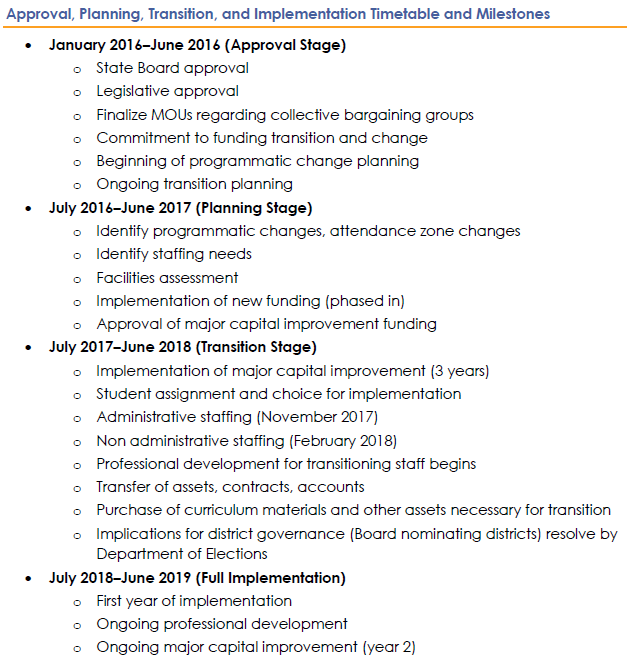7 Things You Need to Know About WEIC’s Interim Redistricting Plan
Don’t have time to read the 170-page interim plan for redistricting the City of Wilmington released by the Wilmington Education Improvement Commission (WEIC) last week? Let me point you in the direction of some essential pieces of information and answer a few questions you may be asking about both the content and the process.
Content
1. What is WEIC recommending in this plan? Here’s my one major recommendation: Make sure to read the five-page executive summary! I found it very helpful. The recommendations fall into two buckets: Redistricting Recommendations and Funding Student Success.
2. Remind me again why redistricting is needed? Another must-read is the impassioned The Case for Redistricting found on pages seven through nine of the report’s introduction. Also, WEIC has created an infographic that illustrates its theory of change for how these systemic changes will lead to improved student outcomes.
3. What’s the proposed timeline for how to make these recommendations a reality? WEIC lays out a multi-year timeline for how to implement its recommendations, once they are approved. This timeline is below. If you want to see more concrete milestones of progress for each phase, check out pages 152-157.
4. What’s the difference between this plan and the previous recommendations of the Wilmington Education Advisory Committee (WEAC)? WEIC used WEAC’s report, Strengthening Wilmington Education: An Action Agenda, as a foundation for its analysis, and built off most of the previous recommendations to provide further detail. There are a few areas of difference:
a. WEAC initially recommended that the Colonial School District be removed from the City of Wilmington, but the current draft of the WEIC plan does not include that recommendation.
b. In order to allocate funding based on the needs of students in poverty and English learners, WEAC recommended either a weighted student funding system, or a modification to the current unit system. WEIC has narrowed in on a recommendation to modify the current unit system in the short term.
c. Some of WEAC’s recommendations that are not immediately related to redistricting are still being discussed by the WEIC committees, such as improving collaboration between and among districts and charters, and creating a statewide plan for coordinating services for low-income students, families, and schools.
5. What else is in this report that I may not know about? In addition to the recommendations, there is a lot of other new substance baked into the report, including:
a. Implementation plans from Christina and Red Clay school districts that outline what decisions would have to be made, when actions needs to be taken, who needs to be involved, and how to engage the community on a plethora of topics from transportation to capital assets, to impacts on students and educators (page 107).
b. Specific definitions and GIS maps of the districts’ current and proposed boundary lines (page 121).
c. Explanations of how WEIC’s work relates to other initiatives in the state such as Student Success 2025 and the Early Childhood Council, (page 95).
d. Ways WEIC will measure progress as its recommendations are implemented (page 150).
Process
6. Is this report final? How do I make my voice heard? This is an interim report that is open for public feedback, which WEIC is accepting through this Google form. There are also five formal public hearings currently scheduled during which the public can provide testimony on the plan before it is submitted to the State Board of Education. More information can be found on the WEIC website.
7. What next? What has to happen in order for this plan to be adopted?
a. December 9th, 2015: The Commission will meet on to review and discuss public feedback.
b. December 15th, 2015: The Commission will meet to decide whether to send the plan forward to the State Board of Education.
c. The State Board of Education can then send the plan back to WEIC to address areas of concern and resubmit, or it can approve the plan. Under current law, the ability of the State Board of Education the act sunsets after the last day of March.
d. If the State Board of Education approves, the plan need to be approved by the General Assembly via a joint resolution in order to move forward. If both chambers approve the joint resolution, the plan would need to be signed by the governor.
As a program officer at Rodel, Neil Kirschling closely follows education in Wilmington, including the work of both the Wilmington Education Advisory Committee and the Wilmington Education Improvement Commission.
This information is current as of 11/18.
Related Topics: delaware schools, redistricting, WEAC, weic, Wilmington

